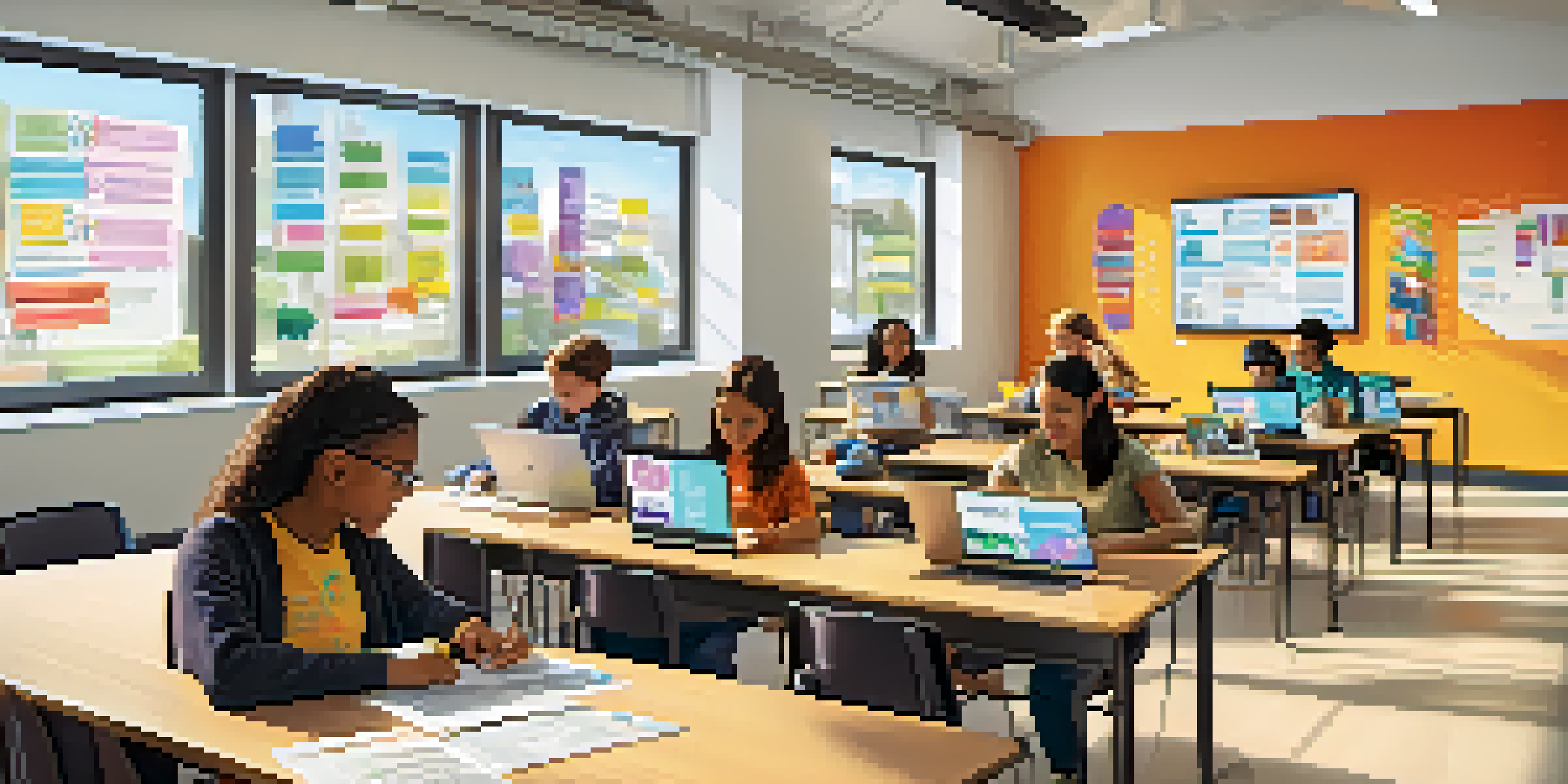Incorporating Real-Time Feedback in Online Assessments

Understanding Real-Time Feedback in Assessments
Real-time feedback is the immediate response students receive during assessments, allowing them to understand their performance as they progress. This instant interaction creates a dynamic learning environment that encourages student engagement. For instance, if a student answers a question incorrectly, they can receive hints or explanations right away, fostering a deeper understanding of the material.
Benefits of Real-Time Feedback for Students
One of the standout benefits of incorporating real-time feedback is enhanced learning outcomes. When students receive feedback instantly, they can quickly correct misunderstandings before they become entrenched. Additionally, this immediate feedback can boost motivation, as students see their progress in real-time and feel more connected to their learning journey.
Real-Time Feedback Enhances Learning
Immediate responses during assessments help students understand their performance and correct mistakes instantly.
Implementing Real-Time Feedback Mechanisms
To effectively incorporate real-time feedback in online assessments, educators can utilize various tools and technologies. For example, platforms like Google Forms or online quizzes can be designed to offer instant feedback on responses. Moreover, integrating chatbots or interactive elements can provide personalized assistance, making the learning experience more engaging.
Challenges in Providing Real-Time Feedback
Despite its benefits, implementing real-time feedback poses certain challenges. Technical issues can arise, leading to delays in feedback delivery, which may frustrate students. Additionally, educators must balance the need for instant feedback with the time required to create and maintain effective assessment materials that are responsive.
Challenges in Implementation
Technical issues and the need for effective assessment materials can hinder the delivery of real-time feedback.
Creating Effective Feedback Strategies
Developing effective feedback strategies is crucial for maximizing the impact of real-time responses. Educators should focus on clarity and specificity in their feedback to ensure students understand their mistakes. For instance, instead of just saying an answer is wrong, providing a detailed explanation can help students learn and improve.
Encouraging a Growth Mindset Through Feedback
Real-time feedback can nurture a growth mindset among students by emphasizing the value of learning from mistakes. When students receive constructive feedback immediately, they are more likely to view challenges as opportunities for growth. This shift in perspective not only enhances their learning experience but also prepares them for future challenges.
Future Innovations in Feedback
Advancements in technology, like AI, may personalize feedback further, creating a more engaging learning environment.
Measuring the Impact of Real-Time Feedback
To gauge the effectiveness of real-time feedback, educators can track student performance and engagement metrics. By analyzing data such as completion rates and score improvements, they can assess whether instant feedback is making a difference. Surveys and student reflections can also provide valuable insights into how feedback influences their learning experience.
The Future of Real-Time Feedback in Education
As technology continues to evolve, the future of real-time feedback in online assessments looks promising. Innovations such as artificial intelligence and machine learning could further personalize feedback, tailoring responses to individual student needs. This could create an even more interactive and supportive learning environment, enhancing the overall educational experience.